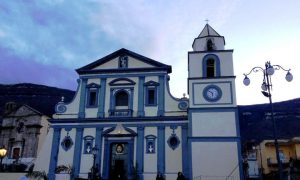Sarno, a small town located in the Campania region of southern Italy, is often overlooked by tourists in favor of more popular destinations like Naples or the Amalfi Coast. However, those who venture to Sarno are rewarded with an authentic Italian experience, complete with charming streets, delicious food, and a rich history that dates back to ancient times.
One of the most interesting things about Sarno is its location at the foot of Mount Vesuvius, a volcano that famously erupted in 79 AD, burying the nearby cities of Pompeii and Herculaneum under layers of ash and pumice. While Sarno was not directly affected by the eruption, the town did experience significant damage from subsequent earthquakes and eruptions over the centuries.
Despite these challenges, Sarno has persevered and remains a vibrant community today. Visitors can explore the town’s many churches and historic buildings, including the impressive Cathedral of San Michele Arcangelo, which dates back to the 13th century. The cathedral features a striking bell tower and beautiful frescoes depicting scenes from the life of Saint Michael the Archangel.
Another must-see attraction in Sarno is the Archaeological Museum, which houses a collection of artifacts from the surrounding area, including pottery, jewelry, and weapons from the ancient Greek and Roman periods. The museum also has an impressive display of fossils, which offer a glimpse into the prehistoric world that existed before the volcano erupted.
For foodies, Sarno is a paradise. The town is famous for its pizza, which is cooked in traditional wood-fired ovens and topped with fresh ingredients like San Marzano tomatoes and buffalo mozzarella. Other local specialties include the delicious “spaghetti alla nerano,” made with zucchini and parmesan cheese, and “baba al rhum,” a sweet pastry soaked in rum.
One of the most interesting things about Sarno is its annual “Fiera di Sarno,” a massive outdoor market that takes place every September. The fair attracts vendors from all over Italy and beyond, selling everything from clothing and jewelry to food and crafts. Visitors can enjoy live music, carnival rides, and other entertainment throughout the week-long event.
But perhaps the most unique thing about Sarno is its connection to the ancient Roman city of Nuceria Alfaterna, which was located nearby. In fact, Sarno was once known as “Nuceria Novi” or “New Nuceria,” and many of the town’s buildings were constructed using materials salvaged from the ancient city. Today, visitors can still see the ruins of Nuceria Alfaterna, including a well-preserved amphitheater and a forum.
In addition to its rich history and culture, Sarno is also known for its natural beauty. The town is surrounded by lush green hills and forests, and the nearby Monti Lattari Regional Park offers hiking trails, waterfalls, and stunning views of the Bay of Naples. Visitors can also take a short drive to the coast, where they can relax on the beaches of the Sorrento Peninsula or explore the stunning Amalfi Coast.
In conclusion, Sarno may not be as well-known as some of its more famous neighbors, but it is certainly worth a visit for those looking to experience authentic Italian culture and history. From its connection to ancient Rome to its delicious food and beautiful natural surroundings, Sarno has something for everyone. So the next time you’re planning a trip to Italy, don’t overlook this hidden gem in the shadow of Mount Vesuvius.

